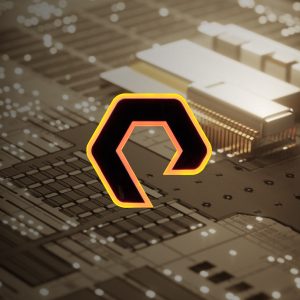00:00
Ai driven medical imaging is pushing boundaries, but here's the challenge these workloads demand massive storage performance to keep up. What if you could scale without limits? From segmenting organs in seconds to generating synthetic data sets that expand research while protecting patient privacy? Healthcare IT teams need a solution that's fast, scalable, and secure.
00:24
That's where Pure storage and Nvidia Moni come in. Let's take a look at how flash plate accelerates AI powered medical imaging. Medical imaging is transforming patient care, but AI-driven work flows come with major challenges such as huge data sets, real-time inferencing, and strict privacy requirements. Pure storage and Nvidia Mo AI are solving this with a high performance scalable architecture
00:52
built for medical imaging. Today we'll walk through how flash blade powers AI driven segmentation and synthetic data generation, helping clinicians get faster, more accurate results. First, a little primer. We're gonna be dealing with two specific NIMs in the Mo AI framework. The first one is VISA 3D,
01:13
which does interacting labeling of up to 127 different anatomical classes, and it combines automated and manual segmentation for enhanced accuracy. And then the Maisy framework, which is gonna generate high quality synthetic 3D CT images so that you can expand your data sets while safeguarding patient privacy. We'll begin by looking at the Vista 3D.
01:36
Now, in a lot of medical imaging use cases. You might have several CT scans that you want to automatically segment for organs or tumors, and here, we're gonna actually walk through one of those use cases. So, we're gonna Start our Nvidia imprinting name. We're just gonna grab one of the many images that we have here to work with,
01:56
and then this image, this function here is gonna plot it for us. So, here we go, we're gonna look at that image. And here is that CT scan. So, obviously, there are many, many slices to this. You could think of this as a volumetric scan, but we're gonna focus just on these three different views,
02:14
the sagittal, coronal, and axial view. Now, what we're gonna do is actually take this whole volumetric image and actually segment one of the specific organs that we're interested here, which is the spleen. Now, as I mentioned before, we can segment up to 127 different classes. But just to show you how quick this can be done.
02:34
And all being powered by a pure storage flash blade. Well, we run that, takes roughly about 2 seconds. And then we're gonna plot the image path. Which is shown here in orange. So here we're actually labeling the spleen along those three different views that I told you about.
02:54
And furthermore, if we actually think about the whole image, the whole movie of that image, here is this gift that's gonna be playing that's gonna actually be segmenting throughout the entire body, that spleen for doctors to use for uh drug tracking or tumor detection, as you can see here, it starts over here on the right, uh, but as we go through the whole body,
03:18
it's actually starts slicing each of those individual organ pieces for us. Now here we actually have the Mazy image, the Mazy diffusion image generation. What we're able to do here is actually is create new CT images. It's gonna augment medical imaging use cases, particularly for use cases where you're missing
03:41
label data. So we could actually go here for chests and look at one of the many different uh. Organs that we could segment, and you can segment many at once. So we're actually gonna look at a generated image. We're gonna look here at the chest CT.
03:58
Takes it a second to load. And we could actually slice through it like we were able to see before in that GIF in. In the Vista 3D. But more importantly here, when we actually click the load segmentation label, so what it does is it generates a unlabeled CT image and then it gives an additional file for
04:19
all of the different classes that we're interested in. So, here it's gonna do all 127, so you actually get to see all of the different uh vertebra labeled differently, different parts of the, of the kidneys, the lungs, etc. More importantly, this is actually all gonna be powered by a pure storage flash rate, so we can actually scale this out to hundreds and
04:38
hundreds of different CT images, uh, passing through and being inferences all at the same time so you could get a faster response back to your medical doctors. Speed and scalability matter in healthcare, whether it's segmenting organs in real time or generating synthetic data sets to improve AI models. Nvidia on AI and pure storage flash blade make AI powered medical imaging faster,
05:01
more efficient, and ready to scale, all while keeping patient data secure. And if you wanna see more ways Pure Storage is helping organizations work smarter, check out Pure 360. It's your hub for quick overviews, expert walkthroughs, and interactive demos all designed to simplify your infrastructure and help you achieve more.


